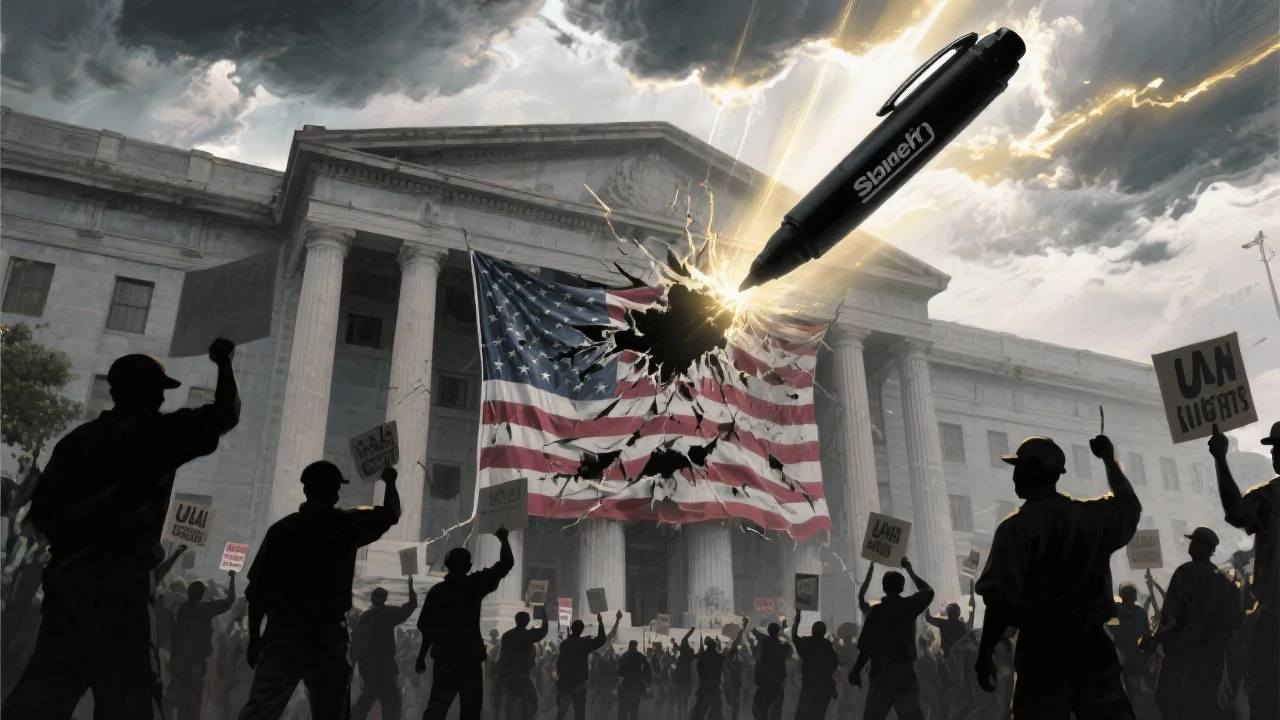
A Radical Escalation Against Collective Bargaining
On the eve of Labor Day 2025, President Donald Trump signed another executive order dismantling more federal employees’ ability to collectively bargain.
The move expanded a campaign that has already stripped more than one million government workers of union rights, with agencies from the Veterans Affairs Department to the Environmental Protection Agency instructed to terminate existing contracts and eject union offices from federal buildings. Labor observers describe this as the most aggressive rollback of worker protections in modern U.S. history, surpassing even Ronald Reagan’s firing of striking air traffic controllers in the 1980s. Liz Shuler, president of the AFL-CIO, has called Trump’s actions the largest single act of union-busting in the country’s history.
The Union-Busting Blueprint
Trump’s executive orders lean on a narrow section of federal law that allows presidents to limit bargaining in agencies tied to national security. Historically, this provision was used sparingly. Trump has expanded it to cover agencies as wide-ranging as the Justice Department, the National Weather Service, and the U.S. Agency for Global Media. Agencies aligned with him, such as Customs and Border Protection, have been spared.
By nullifying contracts, cutting off automatic union dues from paychecks, and gutting bargaining rights, the administration is financially starving unions and forcing them to devote most of their energy to prolonged litigation instead of collective bargaining. This campaign has been described by some labor experts as open season on workers’ rights in America.
The Economic Story Trump Sells
At the same time, the administration has crafted its own Labor Day narrative. Trump officials point to lower gas prices, a strong stock market, and modest blue-collar wage growth as evidence that the president is the most pro-worker leader in decades. Policies such as no tax on tips and no tax on overtime are paraded as proof of worker-first economics. Yet the benefits accrue unevenly, often bypassing the lowest-income Americans while removing traditional protections like minimum wage requirements for federal contractors and collective bargaining rights.
The Question Looming Over Labor Day
Nearly half of unionized workers in America are in the public sector. If Trump succeeds in dismantling federal employee unions, it could set off a domino effect across states and local governments. Millions of workers could lose negotiated guarantees tied to sick leave, family leave, telework arrangements, and workplace safety. For union leaders, the danger extends beyond Washington. Corporations are closely watching the federal example. If the government can erase bargaining rights with the stroke of a pen, private-sector employers may adopt more aggressive anti-union measures.
A Labor Movement at a Crossroads
This Labor Day, unions are organizing thousands of events under the slogan “Workers Over Billionaires.” Yet the gulf between rallies and political leverage remains wide. Court challenges will take months or years to resolve, and by then the damage to collective bargaining rights may already be entrenched. Labor leaders warn that collective bargaining, once a cornerstone of American work, can no longer be seen as permanent.
The deeper issue is whether this moment becomes the catalyst for a revival of grassroots organizing or the tipping point into long-term decline for American unions. Trump may not only be erasing contracts. He could be redefining the very meaning of workers’ rights in America.
